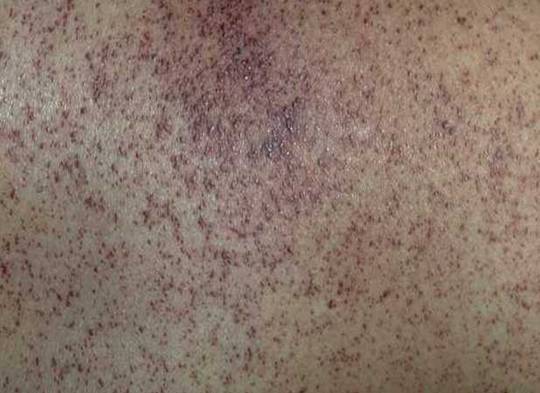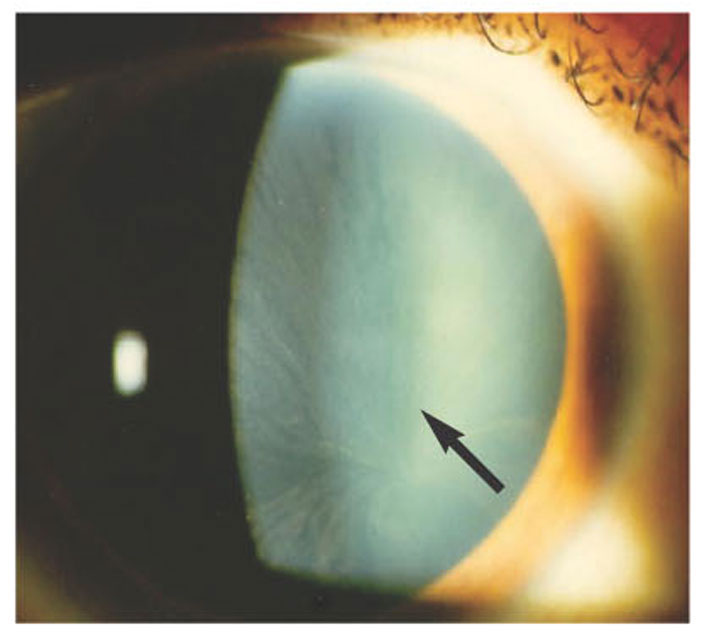Fabry's disease
Fabry's disease is the result of a mutation in the gene coding for the enzyme alpha-galactosidase A. This leads to the intracellular accumulation of neutral glycosphingolipids with terminal linked alpha-linked galactose residues.
The gene is found on the X chromosome. Both sexes may be affected, males more severely, having no enzyme activity.
It is a multisystem disorder affecting:
| Kidneys |
Mild to moderate proteinuria with rarely nephrotic syndrome. Gradual deterioration
in renal function, with hypertesion and ESRD developing by the 4th to 5th
decade in men. |
||
| Heart | Glycosphingolipid accumulation in coronary arteries leads to ischaemic heart
disease. |
||
| CNS |
Autonomic dysfunction is a prominent feature. Also cerebrovascular events
are seen later on in the disease. Paresthesias can be a major problem. |
||
| Skin | Angiokeratomas appear by the 2nd decade of life. Dark red macules or papules of various sizes. |  |
|
| Eyes | Corneal opacities. |
 |
|
| Lungs | Airway narrowing can develop. | ||
Treatment is now available in the form of enzyme replacement.